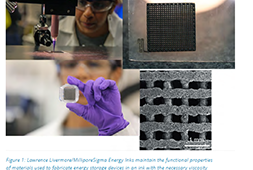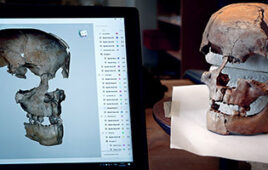Developed at MIT in the 1980s, 3D printing has been used for a variety of applications – regenerating nerve cells, engineering neural tissue, generating graphene components, and more.
Now, 3D printing is also being used to give injured animals a second chance.
 One example is a tortoise whose shell had deteriorated due to a poor diet, which put her at risk for infection and problems socializing with other tortoises. After 600 hours of work, a student at Colorado Technical University was able to outfit Cleopatra the tortoise with a 3D-printed prosthetic shell.
One example is a tortoise whose shell had deteriorated due to a poor diet, which put her at risk for infection and problems socializing with other tortoises. After 600 hours of work, a student at Colorado Technical University was able to outfit Cleopatra the tortoise with a 3D-printed prosthetic shell. 
After being cruelly attacked by a group of young people in Costa Rica, Grecia the toucan lost part of his beak, endangering not only his ability to eat but also the way he controls his body temperature. Several 3D-printing companies immediately offered to craft a prosthesis for the bird, who is being taken care of by an animal sanctuary called Zoo Ave. The bird’s anatomy was, at one point, considered too complex for a prosthetic beak, but 3D printing enables the creation a more detailed device.


The disadvantage to working on wild animals is that some 3D-printed prosthetics are still too delicate to allow the animals to be released back into the wild. Beauty, an American Bald Eagle living in Alaska, lost the top of her beak when it was shot off by a hunter who left her for dead. 
An update on the Birds of Prey Northwest website from April 2015 says that the bird is doing well, and “her upper beak has slowly regenerated some growth, which pushed the specially-fitted beak prosthesis off. The GREAT news in this is that the beak growth now allows Beauty to feed herself.” Beauty will remain in captivity, and her recovery will be observed in order to gather information to help more birds in the future.
3D printing can also aid domestic animals. Derby, born with deformed forearms and no front paws, was fitted with 3D-printed prosthetic front legs by 3D Systems in South Carolina. The company used a ProJet 5500X to manufacture the legs in just a few hours. Prior to that, Derby could only hobble on soft surfaces and was unable to run.
“The beauty of 3D printing is that if the design needs to be adjusted, we don’t have to wait for time-consuming and expensive traditional manufacturing processes, we can simply print out a new set,” Buddy Byrum, Vice President of Product and Channel Management, 3DS, said in a press release. “The dovetailing of 3D scanning and design with the ProJet 5500X multi-material 3D printing allowed for the creation of complete prosthetics printed in a single build, custom-fit to Derby.”




